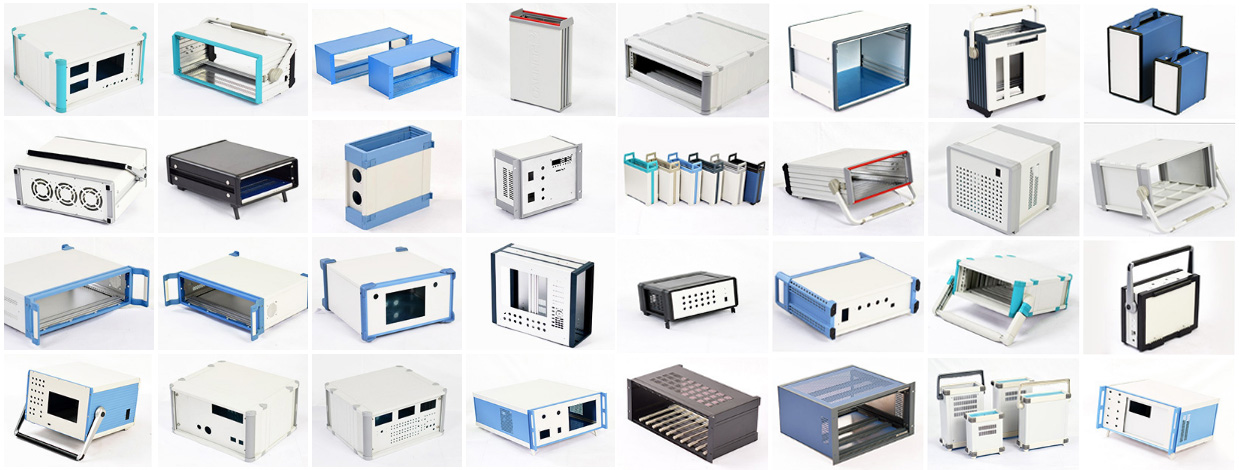목차
1 전기 인클로저의 IP 등급 소개
2 IP67과 IP69K: 자세한 기술 비교
3 극한 환경 사례 연구
4 IP67과 IP69K 중 선택하는 방법
열악한 환경을 위한 호펑팹의 맞춤형 솔루션 5가지
6 결론
1. 전기 인클로저에 대한 IP 등급 소개
해양 시추, 항공우주, 산업 자동화와 같은 산업에서 전기 인클로저는 극한의 온도, 물, 먼지, 기계적 스트레스를 견뎌야 합니다. 올바른 인클로저를 선택하기 위해서는 IEC 60529에 정의된 IP(Ingress Protection) 등급 시스템이 중요합니다.
알고 계셨나요?
열악한 환경에서 발생하는 전기 장애의 70%는 부적절한 IP 보호와 관련이 있습니다. (출처: 산업 전자에 관한 IEEE 트랜잭션)
IP67과 IP69K는 극한 환경에서 가장 널리 논의되고 있는 두 가지 등급입니다. 이 가이드에서는 사양, 용도 및 제한 사항을 자세히 설명합니다.
2. IP67과 IP69K: 자세한 기술 비교
| 매개변수 | IP67 | IP69K |
| 방수 기능 | 30분 동안 방진 + 1m 물 기둥 사용 | 0°, 30°, 60°, 90° 각도의 고압 물 분사(80-100bar) |
| 온도 범위 | -40°C ~ +85°C | -40°C ~ +125°C |
| 기계적 보호 | 직경 2.5mm의 고체 물체에 대한 내성 | 6N의 힘으로 1.5mm 직경의 와이어를 견딥니다. |
| 일반적인 애플리케이션 | 해저 시스템, 자동차 ECU, 의료 기기 | 해양 석유 굴착 장치, 식품 가공, 항공 우주 |
주요 차이점 설명
물 테스트:
IP67: 정적 물기둥 테스트(예: 탱크에 담그는 테스트)를 사용합니다.
IP69K: 80~100bar의 물 분사로 고압 세차를 모방합니다.
내구성:
IP69K 인클로저에는 기계적 응력을 견딜 수 있도록 강화된 힌지와 두꺼운 게이지 소재가 사용되는 경우가 많습니다.
호펑팹의 비교 테스트에 따르면 IP69K 인클로저는 IP67의 200회 사이클에 비해 500회 이상의 세척 사이클을 견디면서 IP 무결성을 유지한 것으로 나타났습니다.
IP67과 IP69K 중 선택하는 방법
| 팩터 | 다음과 같은 경우 IP67을 선택합니다. | 다음과 같은 경우 IP69K를 선택합니다. |
| 물 노출 | 가끔 물이 튀거나 물에 잠기는 경우 | 잦은 고압 세척 또는 스팀 사용 |
| 극한 온도 | -40°C ~ +85°C | -40°C ~ +125°C |
| 기계적 스트레스 | 가볍거나 중간 정도의 충격 | 심한 진동 또는 반복적인 물리적 힘 |
| 비용 고려 사항 | 예산 친화적인 옵션 | 강화 재료에 대한 높은 초기 비용 |
전문가 팁:
하이브리드 환경(예: 사막의 모래폭풍 + 가끔 비가 내리는 환경)의 경우 IP68 인클로저(1m 이상 침수)를 고려하세요.
열악한 환경을 위한 호펑팹의 맞춤형 솔루션
에서 호펑팹는 고객의 고유한 요구 사항에 맞는 IP67/IP69K 인증 인클로저를 설계 및 제조하는 전문 기업입니다:
맞춤형 제작:
복잡한 형상을 위한 3D 레이저 커팅.
부식 방지를 위한 다층 파우더 코팅.
스마트 통합:
온도 모니터링을 위한 열전대가 내장되어 있습니다.
실시간 출입 통제를 위한 IoT 지원 도어 스위치.
인증 지원:
UL 508A, CE 및 IP69K 인증(TÜV 라인란드에서 테스트).
결론
다음 중 선택 IP67 IP69K는 애플리케이션의 환경적 요구 사항을 깊이 이해해야 합니다. IP67은 중간 정도의 조건에서 비용 효율성을 제공하는 반면, IP69K는 고압, 고온의 극한 환경에서는 필수적입니다.
지금 행동하세요:
호펑팹의 엔지니어와 무료 상담을 예약하세요.
프로젝트에 대한 맞춤 견적을 요청하세요: 양식 제출.
호펑팹 인클로저는 IoT 네트워크 인클로저, 센서 인클로저, 임베디드 PC 케이스, 계측기 인클로저, 산업용 제어 박스, 정션 박스, 배전함, 오디오 증폭기 섀시 등 다양한 산업 및 분야에서 사용됩니다.

